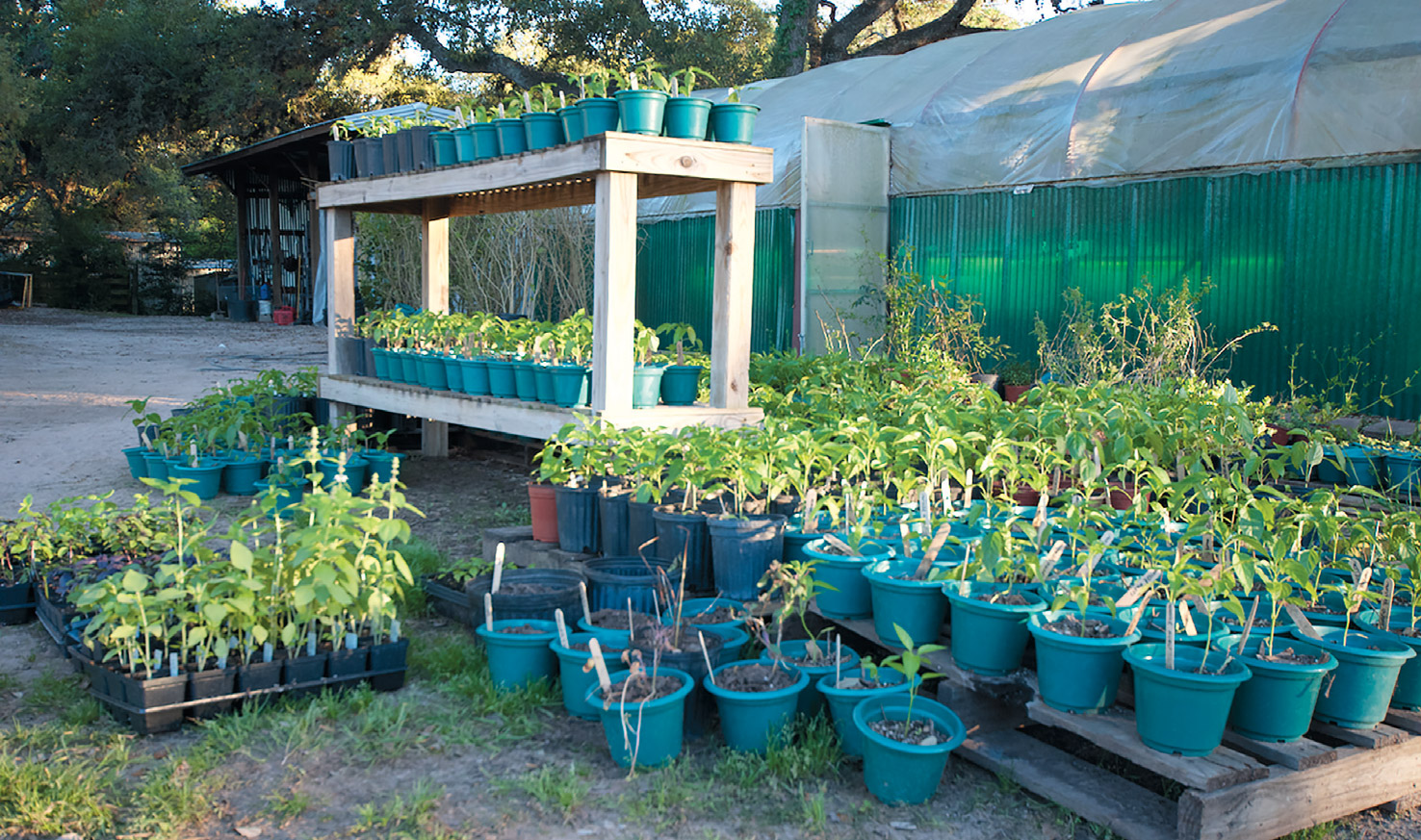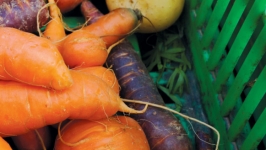The Journey Back to Farming
I recall with fondness eating made-from-scratch meals at my grandmother’s table as a young child. Sweet corn, platters of fried okra, green beans with bacon, and yellow squash would fill her kitchen counters. On the luckiest of days we’d return home from the day’s journey with bags overflowing with plump heirloom tomatoes, juicy satsumas and pecans.
Her garden grew lush and bountiful. Her food nourished, comforted and inspired. Yet, as a child, I never connected this nourishment to farming. My experience eating fresh from grandma’s garden was antithetical to the image of farming I’d memorized.
Farms ran all along Highway 59 from just outside Houston’s city limits to my grandparents’ house in Wallis, TX. They were acres of endless rows—monocropped corn, soy or cotton—running off into the horizon without a soul in sight. Their beauty was about as inspiring as the flavor of the cardboard tomatoes my mama was forced to buy from the grocery store when grandma’s harvests ended. And that was that, my child-mind concluded. Farming was unrelatable and mundane, but grandma’s food and gardens—well, those were somehow magical.
What I failed to understand as a child, however, was that this disconnect—the disparity between food from the garden versus food from the supermarket—was a byproduct of human invention since the advent of industrialized agriculture. Just over 50 years prior, Victory Gardens were not only ubiquitous but considered patriotic. Small-scale diversified farming was our food system. In a matter of decades, the industrial revolution completely transformed U.S. agriculture and its impact was tremendous. Each new technological advance, from mechanization to chemical dependence, pushed us, as a society, further away from our relation to food. We became estranged from our land.
Industrial agriculture sacrifices biodiversity and ecological land stewardship for uniformity, quick yields and easily packaged and transportable crops in order to artificially deflate the cost of food. Today, the consequences of cheap food manifest as food insecurity or food deserts, decreased nutrient density of crops and rampant ecological instability. Industrial agriculture is not inherently evil, but it has caused considerable harm to the health of our communities and environment because it embraces standardization, replicability and faux “perfection.” It abhors difference, uniqueness and diversity as obstacles to efficiency.
The issue is that Mother Nature behaves in exactly the opposite way. She does not understand conformity or uniformity. Healthy ecosystems depend upon diversity and interdependent systems of flora, fauna and microbiology to promote the longevity of the environment.
So, fast-forward 20 years and that same young girl grew up to be a farmer working in the newly budding local-food movement. It was in part nostalgia that fueled my path into sustainable agriculture. My agricultural practice would be a manifestation of all the goodness and love my grandmother cultivated at her dinner table and I would channel my frustrations with our food system into actionable goals.
My mentors taught me to reject stagnant rows of lifeless monocrops and embrace biodiversity and land stewardship. They knew that diversity is the foundation of longevity on every successful farm. Each season brings new challenges, both economically and ecologically, and no crop is immune to either. There is no such thing as “the perfect crop.” That which thrived one season might very well flop the next, but when you farm for diversity, you farm for resilience. For this reason, growing a combination of heirloom and hybrid seed varieties (see note) is a tool small-scale farmers can use to navigate climate and market obstacles.
Cultivating heirlooms can be a challenge but they reward you with outstanding robust flavor and beauty, and their seeds pass down consistently each subsequent generation. Hybrid crop seeds must be purchased anew each season, but they help farmers with product stability and consistency. Both heirloom and hybrid crops contain genes that could be used to combat the next devastating drought, flood, pest or disease epidemic. Seeds contain the histories and evolution of agriculture within their DNA. Their diversity is our genetic resource.
Cultivating and maintaining this diversity is our insurance for the future. Heirloom and hybrid seeds can be our guides out of industrial agriculture back into diversified farming. Even more so, they have the power to reinvigorate the burgeoning economy of local agriculture, sustain it by rekindling people’s love for flavor and diversity in food and help farmers navigate climate and seasonal challenges. By looking to our past through heirloom and hybrid seed varieties and their unique adaptive advantages, we can innovate a more resilient future.
Farmer Becca Verm defines heirloom as “an open-pollinated breed of crop that has been cultivated and passed down among communities or families for over 50 years which will produce plants with characteristics most similar to that of their parents, thus ensuring their survival. Hybrids are defined as plants intentionally cross-pollinated across two distinct varieties within the same species of plant in order to produce an offspring exhibiting the best traits of the parent plants.”







